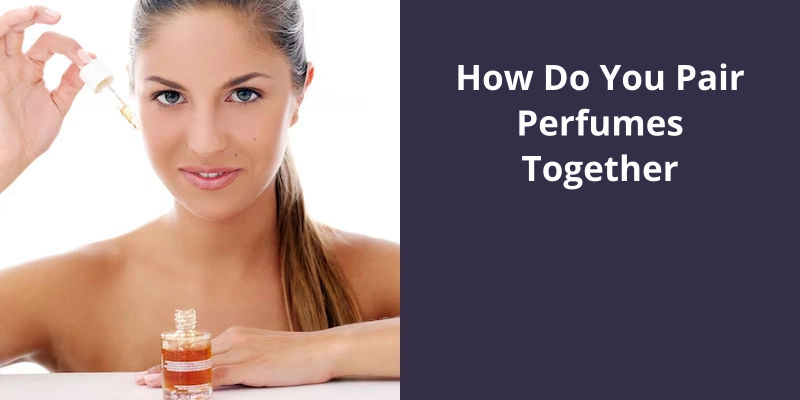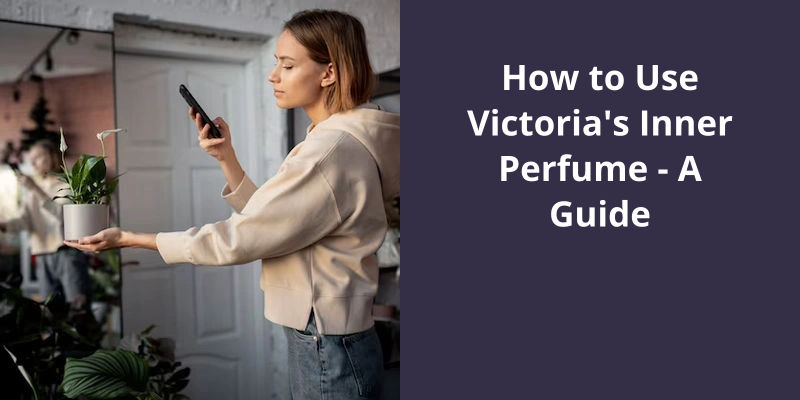Pairing perfumes together involves understanding the notes and families of each fragrance. Floral scents, containing notes like jasmine and rose, usually mix well with fresh fragrances, which include scents such as lemon or other citrus. Spicy oriental perfumes that hold notes of cinnamon and vanilla can be beautifully complemented by fragrances from the woody family like pine or sandalwood. Use a lighter application when mixing perfumes, as the combined scent will be stronger. Always remember to test the combined scents on your skin instead of the bottle, as your body chemistry can alter the final aroma. However, the main idea for pairing perfumes together is to experiment until you discover a unique scent that you love.

Can You Mix Two Different Perfumes?
When it comes to pairing perfumes together, there are a few guidelines to keep in mind. Mixing two complex perfumes can often end up being jarring to the senses, so it’s best to start with a maxim of three scents when layering. This way, you can avoid overwhelming the olfactory system with too many competing fragrances.
When selecting fragrances to pair together, it’s helpful to choose one stronger note and complement it with other lighter fragrances. This will allow the main scent to shine through while the additional ones provide subtle accents. For example, if you’ve a perfume with a dominant floral note, consider layering it with a light citrus or woody scent to create a well-rounded bouquet.
It’s important to let your scent speak for you when experimenting with perfume layering. Start by wearing one fragrance on it’s own for a few days to fully experience it’s nuances and how it interacts with your body chemistry. Then, gradually introduce a second fragrance and observe how the two blend together. Adding a third fragrance can further enhance the complexity, but remember to play with proportions so that one note doesn’t overpower the others.
Patience is key when it comes to discovering the perfect perfume pairing. It can take time to find the right combination that suits your personal style and preferences. Dont be discouraged if it takes a few tries before achieving the desired result. Experimenting with different scents and combinations is all part of the fun.
Everyones tastes and preferences vary, so what may work for one person may not for another. Trust your instincts and have confidence in your choices. Remember, perfume is an expression of your individuality, so enjoy the process and have fun discovering unique scent combinations that reflect your personality.
When it comes to applying roll-on perfume, choosing the right pulse point is essential. The most favored spot is the wrists, as they’re constantly in motion, allowing you to savor the fragrance throughout the day. Simply rub the perfume oil gently onto the inside of your wrist or even on your forearm if desired.
Where Do You Rub Roll on Perfume?
Another popular pulse point for perfume application is the neck. Gently roll or dab the perfume oil onto the base of your neck, where your body heat can help radiate the scent.
For a more subtle application, consider applying perfume to your décolletage. The area between your collarbones is often exposed, making it a great spot to enhance your fragrance.
Some people also like to apply perfume to their inner elbows. This area can be more sensitive, so use a light touch when rolling or dabbing your favorite scent.
Dont forget about the back of your knees! This pulse point may not be as commonly used, but it can be an unexpected and sensual spot for perfume.
Lastly, consider spritzing perfume into your hair. The strands of your hair can hold onto fragrance, giving you a gorgeous scent that will waft with every movement of your head. Just be cautious with this method if your perfume contains alcohol, as it may dry out your hair.
Overall, the key to pairing perfumes together is to choose scents that complement or enhance each other. Consider the fragrance families of each perfume and look for complementary notes. Some common pairings include floral and woody, citrus and floral, or spicy and sweet. Experiment with different combinations to find your perfect scent harmony.
The Role of Fragrance in Aromatherapy and It’s Effects on Mood and Emotions.
- The use of fragrance in aromatherapy for enhancing mood and emotions
- How certain scents can have a positive impact on mental and emotional well-being
- The connection between scent and the limbic system of the brain
- Different essential oils and their specific effects on mood
- The role of fragrance in relaxation techniques and stress reduction
- How aromatherapy can be utilized in various settings, such as spas or at home
- The potential benefits of incorporating fragrance into self-care routines
- The importance of individual preferences in choosing fragrances for aromatherapy
- The impact of scent on memory and nostalgia
- Scientific research supporting the use of fragrance in aromatherapy
Conclusion
Avoid combining two heavy or overpowering perfumes to prevent an overwhelming scent.





